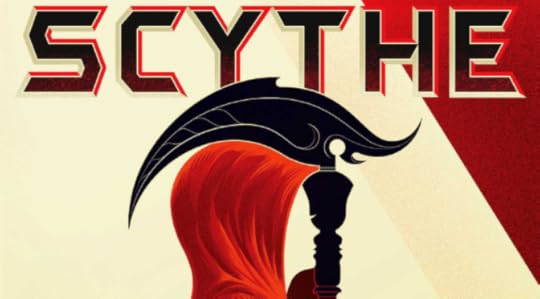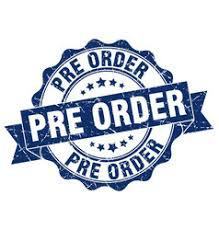Justin Swapp's Blog, page 2
August 12, 2020
The Story Grid Scrivener Template
If you’re a writer, you might have heard of The Story Grid. I originally discovered this book and its author, Shawn Coyne, via a wonderful podcast that I’ve been listening to for over a year now. I’ve been so impressed by Shawn Coyne and what he’s shared with everyone on Tim Grahl’s journey, that I decided to create a Story Grid Scrivener template (click here for the Scrivener 2 version. *Open a new document, import the file, and save as a template) It was partly for me, as I want to use this methodology more faithfully in my own writing going forward, and partly for the community—a way to give back, too, as there seems to be an altruistic vein to Shawn and his mission to help people bring better books into the world.
The Story Grid Scrivener Template
I thought about going into some level of detail regarding the Story Grid storytelling methodology, but I put some of that in the template (in addition to the actual manuscript formatting etc.,) and ultimately, you should get the book, listen to the podcast, and visit their website to truly get the most out of all the content that Shawn Coyne and Time Grahl have put together for the writing community. It’s excellent advice, and there are tons of resources.
The Story Grid Scrivener template gives you some of the Story Grid methodologies in a few bite-sized chunks, each with a link back to the Story Grid website where you can deep dive into all their content.
The Story Grid Scrivener template formats the skeleton of your manuscript in the Beginning Hook, Middle Build, and Ending Payoff format, and has the 15 most important scenes files for you move into your chapters and scenes as you see fit. This forms the spine of your story’s skeleton.
The five commandments of writing a scene and of storytelling are in there, too. Each Scrivener corkboard card has that outline built into it.
As you familiarize yourself with The Story Grid, you’ll soon find that there is a whole methodology to how your book should track and flow. This has to do with value shifts that keep the story interesting, and the reader engrossed in your story. Shawn tracks these in a spreadsheet, and once you get a look at it, it can be kind of intimidating. I figured out how to do the same thing, or pretty close, with Scrivener’s metadata. With this template, you can merely click on the metadata field in the outlier or in the sidebar and input the values for each of the fields. Check out the screenshots below, and enjoy!
Get the Story Grid Scrivener Template


Scrivener’s Linguistic Focus
One of the best new features in the updated Scrivener 3 is the new functionality called linguistic focus. This is one of those features you didn’t know you needed until you had it. It reminds me a little bit of the Sony Walkman back in the day. You finally had a music device that gave you portability, control, and some longevity…until the iPod came along, and blew up the whole notion of portable music, and changed an industry forever. #Revelation
Linguistic Focus in Practice
Once you’ve edited with Scrivener 3’s linguistic focus, you’ll realize that there was always a better way to edit. Take me, for example. I recently released my second novel, and it wasn’t until I was on my second edit that I realized I had a character with a very specific speech pattern that required special attention, or it wasn’t going to work. I was a little overwhelmed at first until I remembered I had upgraded to Scrivener 3 which happened to come with this new handy dandy feature.
[image error]
I scrambled to find the linguistic focus feature (Edit —> Writing Tools —> Linguistic Focus. Once activated, Scrivener 3 gave me a little dialogue box (pop up window) that let me control the parts of speech I wanted to zero in on. Scrivener achieves this by “greying out” the text that doesn’t belong to the part of speech you select, in effect, bringing it to the foreground.
[image error]
By selecting “Direct Speech” I was able to “focus” in on the dialogue, the very part of speech I was trying to address. After that, a simple Command + F (to search, or “find”) on a Mac, or CTRL + F for Windows to search for my character’s dialogue tags (his name) let me quickly identify his speech and dialogue beats. I can only estimate how much time this feature saved me, but I have no doubt it was significant.
If you haven’t fired up the linguistic focus feature yet, I’d highly recommend you give it a whirl. Like me, you might just find you’ve outlived your Walkman, and have had an iPod within reach this whole time.
How to Write a Novel
So, you want to write a novel, huh? That’s a noble desire. But as Stephen King put it in his novel, On Writing, “you must not come lightly to the blank page.” Have you thought through what writing a novel really means—what it requires—not only of you, but of those around you? I won’t patronize. I just want to make sure you’ve considered this. If you can set aside the time to focus, and commit to the work, you can do this. It’s like deciding to have a baby. You’re considering bringing a living, breathing thing into this world. If you haven’t thought this through, go take a walk and mull it over.
Writing is Organized Thinking
The first step in writing is to organize yourself, and your thinking. Ideally, you create a space for your thinking, and a flow or a process for how you will create, log, find and manipulate your writing. Writing a novel is a long, arduous process, and the better organized you are on every level only helps you keep your sanity, and optimize your productivity, which can be the difference between you finishing what you started or not.
Your Writing System
How will you write, and where will you put your writing? That might sound like a silly question, but it’s really not. Will you be writing with pen and paper, or only digitally, or both? Writing on the go or from one place all the time at a set time? There’s no right or wrong answer. Either way, you’ve got to organize how you will write, and where you will store your work.
Writing Offline
Perhaps you feel like being online will distract you, so you don’t gravitate to electronics to help you write. Or, maybe you just like the novelty of pen and paper. Either way, there are plenty of folks who enjoy writing this way. If you want to write the old school way, here are some tools that will help:
Pens, pencils, markers, or anything else that bleeds your writing.
Have fun with it. If you’re going old school, use color, and glitter or whatever might make this medium click for you
A portable writing journal, legal pad, binder etc
There are moleskin journals and all other kinds. Pick one that has an ambiance or that thematically inspires you. Might as well!
Corkboard/Bulletin board with push pins
There are a ton of ways to leverage these boards to organize what will be your scenes or characters or chapters. Being able to zoom out and see and manipulate your story from the 20k ft level can be powerful.
Colored or white 3×5 note cards
These can become little units of writing, as I mentioned above. Character or setting cards, or scenes, or whatever you want.
Colored Sticky / post-it notes
You can use these for little side notes, or reminders, or whatever else you’d like.
Writing Online
There are many reasons why writing “online,” or leveraging technology and the cloud (read: online) is a preferred way to go. Chiefly, it’s about productivity and access. Most of us probably have a smartphone, a computer, or some other device that unlocked a myriad of tools and systems that improve our productivity
First, you need to consider how many devices you will be writing on. If it’s just a computer, and one computer at that, then your approach could be fairly simple. You would just need writing software and a place on that computer to save your files.
Today, though, it’s likely that you will have many devices. A phone, a work computer, a home computer, and perhaps a tablet, among other devices. It might be wise to consider how you will be writing across all those devices, and how you can share your writing across them so that you aren’t sending files back and forth and creating extra work for yourself to organize.
Enter the online storage “lockers.”
Writing in “The Cloud”
There are many services, often free, that let you create and store your files online. You may have heard of Google Drive, Microsoft OneDrive, Dropbox, or even Box. These systems started out as online storage, and have evolved into document and writing software platforms, too.
There are a ton of other platforms and writing software that either use these services in the background or store your writing on their own servers. Platforms like Microsoft Word, Evernote, Scrivener, iA Writer, the Hemingway app, Grammarly, Ulysses app, and many others that allow for writing this way.
However you choose to approach your writing, you’ll save time if you think this through up front, and make a decision to approach your writing in a way that best suits your lifestyle, and schedule.
In future posts we’ll start getting into the actual writing, for now, this should give you a lot to research and think about.
How to Write a Novel: Basic Story Elements
The first step in writing is thinking about the basics–your story elements. You’ll want to get comfortable asking yourself questions that will help you develop these elements that result in the spine of your story. Fleshing out as many of these details will ultimately help you plan and execute your writing. It’s much easier to do the work if you’ve determined some of your initial story elements up front, as opposed to meandering around until you trip over something interesting. That said, don’t worry if you’re more of a “pantser” than a “plotter.” You can still get your buzz from discovering your story elements as you go, but if you have no footing to stand on, you can get no writing done fast. Consider the following foundational story elements, and then ask yourself who, what when, where, and how?
Character(s)—The people (or animals, or aliens, or serial killers or whatever genre specific device) that the reader will follow in order to experience the events of your story.
Point(s) of View—The point of view through which the reader will experience the events of the story. This can shift, or stay the same.
Situation/Plot—The situation that incites the incidents of the plot. This will establish the tone and theme.
Setting—Considered by many a character in its own right, the place and time in which the events of the story occur.
Conflict—The nature of tension between the protagonist’s goal or desired outcome vs the forces in the story that actively thwart that goal.
Stakes—The risks, rewards, and ramifications for achieving either the protagonist’s goal(s), or the antagonist’s goal(s).
Theme—The thematic meaning—the subtextual sinew that connects the character’s action/reaction to the plot and the story in such a way that it delivers meaning to the reader.
In future posts, I’ll be breaking down these story elements in more detail to help you work out how to plan your novel. This planning helps you once you start the actual writing. It’s easier to tell your story—actually get the writing done—if you have worked out some of the details, or at least some of the dynamics above.
May 5, 2019
Scythe Review
I’d give Scythe 4 gleanings out of 5.
This is a fun book filled with well-rounded characters, an engaging plot, and a very interesting world draped in religious overtones with hints of sci-fi. For me, this amounted to a curious mix of environment and feeling that the author, Neal Shusterman, pulls off well.
Scythe is set in a distant future but feels like its set in the near future in some ways. Countries are organized and named a bit differently, but they still feel familiar. America is called midmerica, for example, and you’d recognize many of the same things we do today, like pool parties. But there are bigger things that are quite a bit different from our world today. Civilization is more, well, “civilized.” There is no real crime, and, ironically, everyone has agreed to let the Scythes, modern-day grim reapers, stalk the world and “glean” people in order to keep the population totals under control. The book explores how people hold the honorable Scythes on a pedestal and the various human traits that surface in an environment with those dynamics. Very interesting stuff.
Technology has also evolved. The cloud *(Internet and data accessible from anywhere) has become the Thunderhead, a benevolent overseeing Skynet type that is in the background of the story until… it’s not.
Nanites have been made available to everyone to help them heal, or deal with the pain that would have been experienced in the “age of man.” Society can even leverage the nanites to shape or reshape their bodies to their liking.
This makes the whole notion of killing almost moot. If someone dies, they are “deadish,” and can be revived at a healing center. Only when someone is gleaned (or burned) are they truly gone, and beyond help.
In short, the plot revolves around two children that are selected to become Scythe apprentices, both under one single honorable Scythe—an unprecedented move. Their worlds are turned upside down as they come together only to get torn apart by warring factions and belief systems within the Scythe conclave.
What results is a fantastic adventure that easily held my attention, and drug me along for the wonderful ride.
November 25, 2018
The Crimes of Grindelwald Movie Review
[image error]
I’d give Fantastic Beasts: The Crimes of Grindelwald 3 wands out of 5
(It should probably be 2.5 wands, but out of respect for Ollivander and not wanting to break a wand in half…)
My son and I went to see Fantastic Beasts: The Crimes of Grindelwald this weekend, and for the second time seeing a movie in The Fantastic Beasts series, I walked away feeling bewildered, and disappointed. Not just at the confusing plot lines, mind you, but at how a movie with such a great cast, and such a wonderfully rich world like Harry Potter’s can continue to execute on movies in this way.
Alas, I’m probably sounding too critical.
The cast was very good. Johnny Depp was fantastic, but not to overshadow the great performances by everyone else, really. The acting was great across the board, in my opinion, no issues there.
The material has a ton of potential. It’s the Harry Potter universe, after all. The back story on the world, and some of these characters has left fans wanting more for years. Grindelwald… the American version of Hogwarts and the Ministry of Magic over here… young Dumbledore…Lot’s to work with. Perhaps that was the issue.
The problem was the movie was just okay, and for me, that was largely due to the plot. You have a story of Grindelwald, his escape, and his attempt to win over the magical world with his seductive charm. That seemed to be the main theme they tried to convey. That’s all well and good, I suppose, but the other plot lines were more interesting to me. They should have been explored more thoroughly, and explained better. I won’t go into them because they lead to spoilers, and this is a spoiler free review. Instead, we get a fake love triangle, a hint at Dumbledore and Grindelwald’s past relationship, and other, either meaningless, or under developed storylines that just muddy the plot that’s brought to the forefront.
All in all, I feel like the movie tried to do too much with the wrong stories, and didn’t dive deeply enough into the ones I wanted to know more about. This resulted in my disappointment on two fronts. First, the plot feeling all over the place, and slightly confusing, and second, the plot being relative to something I didn’t care much about. Furthermore, all the twists in the movie were apparent to me, except the last one, which is a big one, and that one even fell flat because of how it was delivered.
I’m sure I’ll buy the movie when it comes out because it’s a Harry Potter movie, and because I want to give it another chance. Of course, that’s what I said about the last one…sigh.
The Shadow’s Servant Podcast Appearance and Audiobook Update
I hope your Thanksgiving was great, and that you got to spend time with your families. I’ve been pretty focused on launching The Shadow’s Servant in the last few months, and most recently, working with the narrator on the audiobook. So, I just wanted to get a couple of fun updates out there for you, especially since it’s been a while since I’ve posted one.
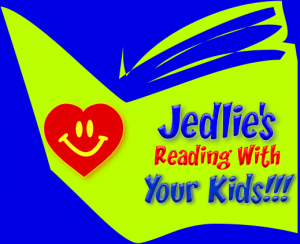
Podcast:
I recently joined the Reading with your Kids podcast to promote The Shadow Magic Series and to talk about writing in general, writing for kids, and a whole bunch of other things (we even got into horror and stuff like that). I was a bit nervous, but it was a good time and a great experience. You can give it a listen here. Tell me what you thought of the interview.
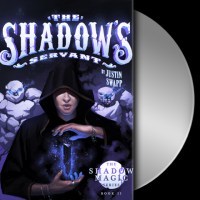
The Shadow’s Servant Audio Update:
The Shadow’s Servant audiobook production is finished! I’m actually done reviewing the narration, too, and the narrator, Steve Barnes, has the edits and is working on all the little nits I sent over for him to review. If all goes well, The Shadow’s Servant will be released on audio in the next week or two! I’m always so impressed with Steve’s narration, and this time was no exception. The audiobooks continue to be my favorite version of my work.
August 26, 2018
The Shadow’s Servant Pre-order is Live
This author’s favorite day is finally here! (I mean, this is the closest I’m getting to childbirth, right?) After a ton of work, and all kinds of snafus and the like, I’m delighted to announce that The Shadow’s Servant ebook is up for pre-order worldwide, and we have an official launch date of Sept 7th across all platforms!
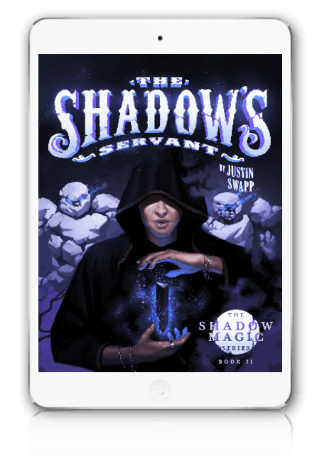
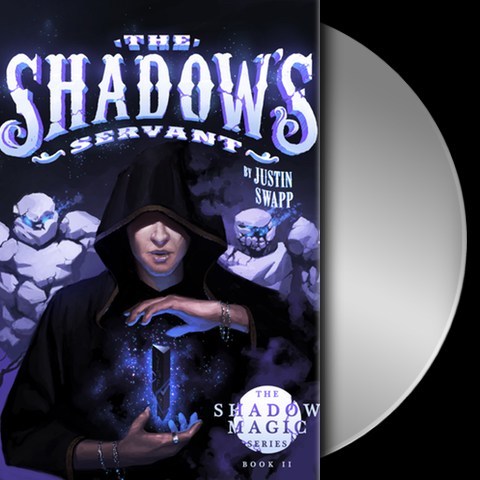
Not only that, but I just sent the manuscript to the great Steve Barnes, the same narrator who did such an amazing job with The Magic Shop audiobook. He’s signed on to do The Shadow’s Servant as well, and I couldn’t be happier. He’s trying to get a little reading in before he starts production in September, as well.
Here are a couple quotes from two of The Shadow’s Servant’s Alpha Readers.
1) “It was super fun seeing Marcus survive so many challenges and try to uncover the truth that his family continued to hide over and over again. I found myself constantly trying to figure things out and being deceived by other character’s double-intentions.” —Wattpad Reader
2) “I haven’t read an actual book in a while and it reminded me of my love for reading. They really need to make a movie of this, as I read I could picture everything vividly.” —Amazon Reader
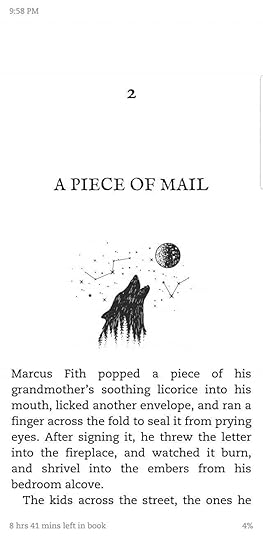
If you enjoyed The Magic Shop, I think The Shadow’s Servant will really blow you away.
If you know anyone that likes this kind of book, please spread the word. I need all of you fair readers to help this book see the kind of launch it deserves.
Happy reading!
Justin
The post The Shadow’s Servant Pre-order is Live appeared first on Justin Swapp.
May 26, 2018
Solo: A Star Wars Story Movie Review

Solo: A Star Wars Story
Directed by Ron Howard
I’d give Solo 3.5 parsecs out of 5 in this Kessel Run
Summary Summary
Perhaps I had high expectations of this movie. After all, I had really enjoyed the most recent run of Star Wars films: Rouge One, The Force Awakens, and The Last Jedi, even though that last one got seriously mixed reactions from fans (I still really enjoyed it – minus the Leia force moment).
So, I was excited to see Solo. As characters go, Han Solo has always been a fan. I was anxious to get more of his backstory, just like everyone else. At its core, Solo is a young love story, but it quickly turns into a story about friendship and the consequences of your decisions.
The movie starts off introducing us to a world where children are captured and used to plunder and steal for a local gang, of sorts. As long as the children do what they’re told, they have food and shelter, and they have somewhere they belong.
As one of these youth, Han is trying to find a way out. He wants to get away, and become a pilot. If he can steal for the gang, and skim enough off the top, he can save up to buy a ship, and get him and his girlfriend out of their situation, and off the planet for a fresh start at a new life.
Without spoiling the show–things go right until they go wrong. Han and his girlfriend get separated, and the rest of the movie is about him trying to find her again. They run into each other again, but under very different circumstances. They still love each other like they did in the past, but they have both changed, and done things that complicate the prospects in the present.
Overall, Solo is a good movie, and safe to take your kids to. You’ll enjoy it, I think, but it’s not the best of the most recent Star Wars movies.
The post Solo: A Star Wars Story Movie Review appeared first on Justin Swapp.
February 4, 2018
Cirque Du Freak A Living Nightmare Book Review
Darren Shan is a regular boy—besides his love for spiders—with regular friends, and regular problems. But everything normal in his life turns upside down when he discovers a mysterious flyer informing him of a forthcoming circus. Excited, he shows the flyer to his friends, and they begin plotting a way to attend.
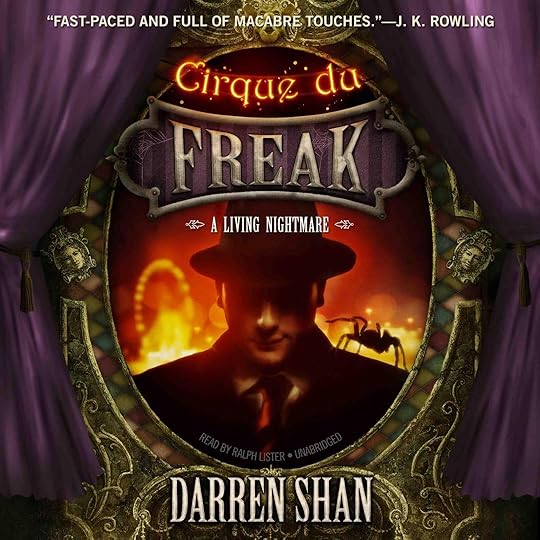
Audiobook Sample: CLICK HERE
Darren and his friends learn about the circus little by little, until they are so intrigued with going that they amass the means, and manufacture the truth they need to tell to attend. But what they find is no normal circus—its full of freaks—and the danger they pose is all too real…especially the Vampire!
The book touches on the meaning of friendship, and loyalty, and explores the meaning of love, and sacrificing one’s self for the greater good.
I listened to the audiobook version of the story, narrated by Ralph Lister. He did a phenomenal job with the storytelling, and the voice acting.
I give this book 4 deflated soccer balls out of 5. Recommended!
The post Cirque Du Freak A Living Nightmare Book Review appeared first on Justin Swapp.

